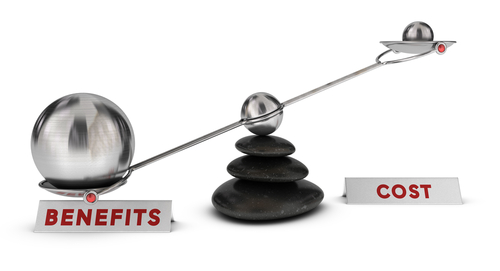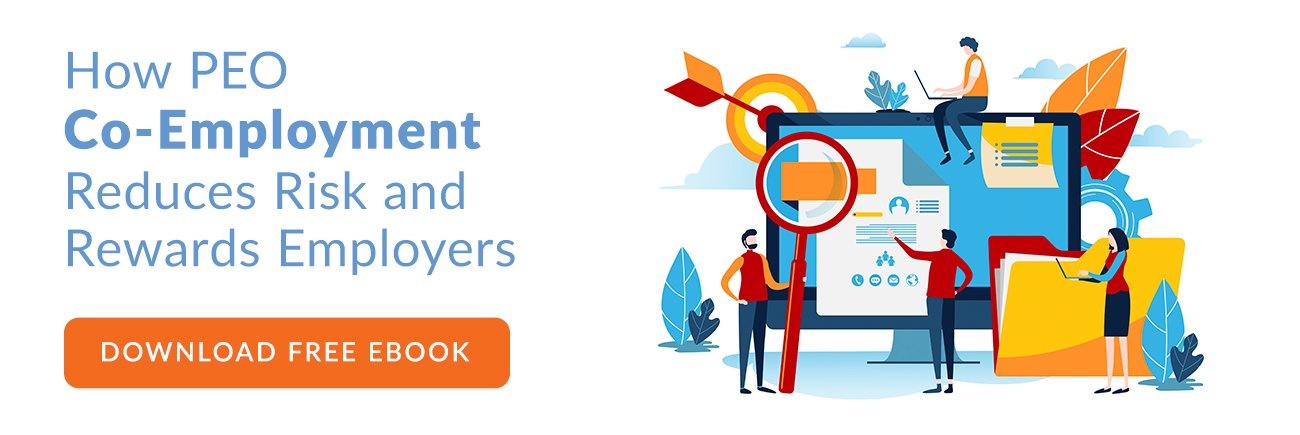A recent survey by Small Business for America's Future found that providing employees with health insurance is the biggest challenge for about 55% of business owners. Sadly, this is not surprising, considering that employees' health insurance premiums are 4% higher than in 2020 – more notably, premiums are about 47% higher than in 2011.
The ongoing increase in health insurance premiums is a harsh reality that employers cannot control. However, employers can still find ways to minimize increases in their healthcare costs.
Entering into a co-employment relationship with a Professional Employer Organization (PEO) is one of the best ways to control your company's healthcare costs. Here is a brief overview of how this works.
What is a Professional Employer Organization (PEO)?
A Professional Employer Organization (PEO) is a full-service human resource outsourcing agency that enters into co-employment relationships with business owners. Essentially, the PEO takes over some of the employer's responsibilities, usually administrative roles. The business owner retains direct employee oversight in the business's day-to-day operations.
PEOs handle many HR roles and offer many essential services, including:
- Payroll administration.
- Tax filing.
- Recruiting and hiring.
- Talent management.
- Human resource support.
- Unemployment administration.
- Compliance assistance.
- Benefits administration.
- Workers' compensation administration.
- Family and Medical Leave Act administration.
Notably, PEOs are responsible for benefits administration in the co-employment relationship with the business owner. Fortunately, a PEO's size enables it to offer employees benefits packages (including health insurance coverage) negotiated at scale, saving business owners a lot of money.
What is Co-Employment?
A PEO's business model is based on a co-employment relationship with business owners. Technically, the PEO becomes an equal employer partner with the business owner, and each party bears some of the employer's roles and responsibilities. The PEO usually undertakes administrative obligations, including benefits administration.
Co-Employment & Employer Status
The term 'employer of record' is crucial when defining the co-employment relationship between a PEO and a business owner. The employer of record refers to the employer recognized by the IRS and other authorities.
The PEO's administrative roles include payroll administration and filing tax returns. PEOs file their clients' tax returns under their federal employer identification number (FEIN), making them the employer of record. Besides the IRS, other third parties (including health insurance providers) also recognize the PEO as the employer of record.
Co-Employment & Affordable Health Insurance
Your company's size and the number of employees determine the types of health insurance plans available to you. Small companies with few employees usually have limited options, and their plans are typically costly. In contrast, large companies with many employees have enough leverage to negotiate affordable and beneficial plans.
Insurance companies consider the PEO the employer of record. Essentially, your employees are the PEO's employees, and PEOs with many clients have many employees. Like large companies with many employees, PEOs can also negotiate affordable health insurance plans for their (your) employees.
Overall, PEOs handle everything to do with your employees' health insurance. They find a suitable plan (and they have many options), negotiate the premiums, onboard and enroll the employees, and handle all other administrative tasks on your behalf.
What Other Costs Can PEOs Control?
Besides employees' health insurance, a Professional Employer Organization can also help you control other costs, including:
Workers' Compensation Insurance
Administering workers' compensation is a complex and often costly process. Fortunately, a PEO can help reduce the costs of workers' compensation insurance in various ways, including:
- The PEO provides HR experts to resolve any current administrative issues contributing to unnecessary costs.
- You don't need to pay the expensive upfront deposits usually charged when joining a new workers' compensation plan – you are joining the PEO's existing plan.
- You join the PEO's low Experience Modifier Rate (EMR), one of the factors insurance companies use when determining your premiums.
- The PEO reviews and classifies your employees into the correct worker codes – different worker codes attract varying premiums.
- PEOs have enough leverage to negotiate reliable and affordable workers' compensation insurance.
The PEO also handles the administrative tasks of verifying workers' claims and issuing compensation. Overall, partnering with a PEO saves you time, work, and money.
Retirement Plans
Making your PEO a co-sponsor in your employees' 401k retirement plans can also save you time and money. As a co-sponsor, the PEO will assume many of the administrative tasks and offer the following benefits:
- Benefit plan cost savings.
- Combining plans and assets to lower your plans' costs.
- Transferring and accepting fiduciary liability.
- Sharing administrative expenses, including the investment advisor's fees.
- Ensuring compliance with regulatory and legislative requirements.
- Preparing and filing the employer's annual report.
A PEO gives you access to multiple employer plans (MEPs). MEP plans are usually more affordable and may offer better returns than ordinary plans.
HR Compliance
Non-compliance with laws and regulations can cost your business everything. The consequences may include the following:
- Fines.
- Whistleblower complaints.
- Investigations and lawsuits.
- License suspension or cancellation.
- Reputation damage.
Unfortunately, many businesses struggle to keep up with the existing laws and regulations. Fortunately, PEOs have the expertise and resources to ensure compliance.
Control Costs with Co-Employment
Business owners don't have to shoulder the costs and other burdens of business administration alone. Entering into a co-employment relationship with a PEO can help you control various employee benefits costs, including health insurance premiums. The co-employer also handles other administrative tasks that would take the business a lot of time and cost a lot of money in professional HR services.



